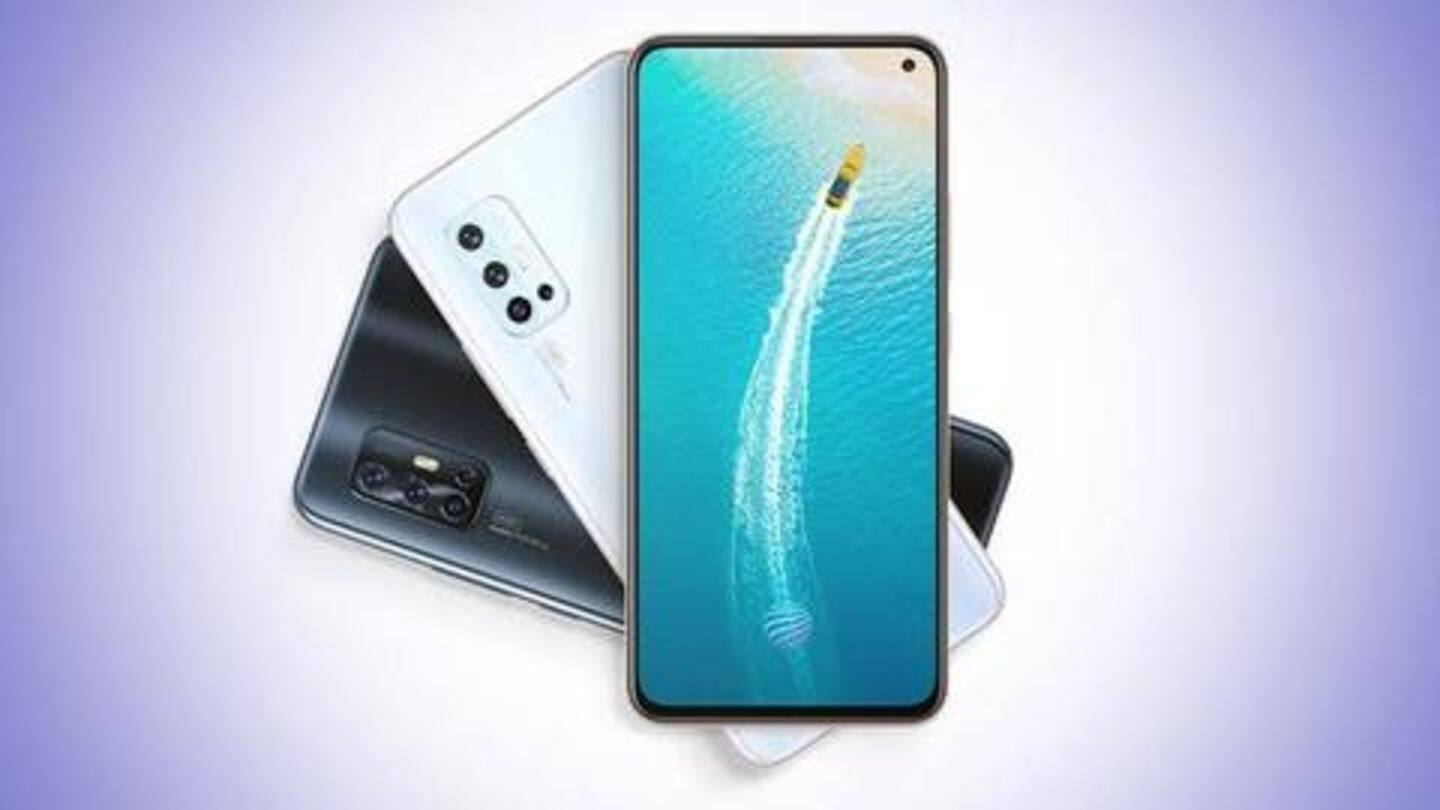
Vivo V17, featuring 48MP quad cameras, launched at Rs. 23,000
What's the story
After several leaks and teasers, Chinese tech giant Vivo has finally launched the V17 smartphone in India today at Rs. 22,990. The India-specific model comes with a different design and specifications as compared to the one which was launched in Russia recently. The handset sports a punch-hole design, 48MP quad rear cameras, a 32MP selfie snapper, and mid-level internals. Here's our roundup.
Design and display
The handset offers edge-to-edge screen with punch-hole design
Unlike the V17 model (launched in Russia) which sports a waterdrop notched display and diamond-shaped camera setup, the Indian variant features a punch-hole design and a rectangular quad camera module. The handset offers a 6.44-inch AMOLED display with a full-HD+ (1080x2400 pixels) resolution and 19.5:9 aspect ratio. Furthermore, it houses an under-display fingerprint reader for secure unlocking.
Cameras
What's the camera like on Vivo V17?
Vivo V17 houses a quad rear camera setup comprising a 48MP (f/1.8) primary sensor, coupled with an 8MP (f/2.2) ultra-wide-angle sensor, 2MP (f/2.4) dedicated macro camera, and another 2MP (f/2.4) depth sensor. For selfies, video calling, and face unlock, the handset houses a 32MP (f/2.0) front-facing snapper which also supports 1080p video recording at 30fps.
Internals
Here's a look at the internals
The Vivo V17 draws power from a Snapdragon 675 octa-core processor and a 4,500mAh battery with 18W fast-charging technology. As for memory options, the phone offers 8GB of RAM and 128GB of expandable storage. Moreover, it runs Android Pie-based FunTouch OS 9.2 and packs all the latest connectivity options including dual-SIMs (Nano), VoLTE, dual-band Wi-Fi, Type-C port, and a 3.5mm headphone jack.
Information
And, what about pricing and availability?
The Vivo V17, available in solo 8GB/128GB configuration, is priced at Rs. 22,990 in India. The handset will be up for grabs via major online and offline sales channels starting December 17. Lastly, it will compete against Redmi K20, Samsung Galaxy A50s, and Realme XT.